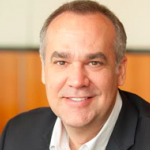When Vice President of IT Robert Pischke joined Lehigh Hanson, morale was low: IT staff were dissatisfied with their opportunities for growth and attrition was high. Through a series of steps that included implementing training programs, renovating the office, and adding awards programs, Pischke helped turn around the team, which today enjoys low attrition and a wave of new growth.
 Pischke was recently awarded the Global CIO of the Year award from the Dallas CIO Leadership Association. He shared with us his recipe for improving talent retention and advice for other CIOs facing the same problem.
Pischke was recently awarded the Global CIO of the Year award from the Dallas CIO Leadership Association. He shared with us his recipe for improving talent retention and advice for other CIOs facing the same problem.

The Enterprisers Project (TEP): Can you describe your role in improving talent retention within IT at Lehigh Hanson? What did you find worked best?
 Robert Pischke: I would say my role is the leader of the orchestra. When I joined the company six years ago we had an attrition problem and we were losing IT. We raised the management team’s awareness to that issue, and we took a multifaceted approach to solving it.
Robert Pischke: I would say my role is the leader of the orchestra. When I joined the company six years ago we had an attrition problem and we were losing IT. We raised the management team’s awareness to that issue, and we took a multifaceted approach to solving it.
First, we put some training programs in place where you’re required to take 24 hours of education, whether it’s technical training, soft skills, or attending a conference. We also worked to create a sense of belonging by issuing company apparel, including polo shirts, jackets, and things of that nature to help staff identify with the company and with the team.
Third, we created a new work environment. We renovated a floor in the corporate building: floor-to-ceiling glass where everybody gets to enjoy the sunlight, 11 conference rooms, a team room that has an Xbox, a big screen TV, a shuffleboard, and an old-school arcade. Fourth, we created a line of sight to understand what the corporate objectives are, and we align our project portfolio against those corporate objectives. This ensures that everyone knows the impact of their work, whether it’s customer satisfaction, margin improvement, or revenue. And finally, we put into place some rewards and recognition programs where we award things like American Express gift cards, anniversary lunches, and town hall meetings, as examples.
TEP: Given your success, what advice do you have for IT leaders grappling with the tech talent crisis today?
Pischke: You’re going to have to pull out the stops and get creative to become competitive. That might mean changing your practices about how you’re managing and engaging that talent and where you’re finding them.
One of the steps we did six years ago was to simply implement a referral program, which might be a common practice for a lot of corporations, but it’s something Lehigh had not done seriously. We know that employees are capable of bringing forward other people who would be suitable for the organization, given the culture and given their work ethic. We’ve found that to be a successful measure.
TEP: Switching gears, you’ve mentioned the 80/20 principle in IT, where 80 percent of resources go toward maintenance of existing systems, with the remaining 20 percent devoted to innovation. Is there a specific balance you are striving for in your IT org? How are you getting there?
Pischke: You have to ask yourself if you want to work on projects in application development, or if you want to work on support. Support is necessary, but it adds slightly less value than an application project would, enhancing the value to the corporation. We call this core versus context. If it’s core, it’s near and dear and we assign that to our internal IT. If it’s contextual, that might be something we nearshore, offshore, or outsource because it’s less important to us. This creates roles and opportunities for the internal employees.
I’m never satisfied with 80/20 or 75/25 or even 60/40 because the more money and thought leadership that we place into the application and project portfolios to drive the corporation forward, the better off the shareholders, suppliers, customers, and ultimately the employees of Lehigh Hanson are. So it’s an evergreen journey to continue to drive that percentage as best we can to bring that 80 percent down and the 20 percent up.
TEP: You said that digital transformation of the customer experience is a priority for you. Can you talk about where you are in those efforts?
Pischke: We are gaining momentum. We’ve been a big investor in the customer experience, whether it’s our digitalization platform, our employee portal, or our mobility offering on Android and iOS. We’ve seen a hockey stick uptick: Our adoption rate has been at about a 45 percent angle now for the last two years, and it’s because we’re creating something of value for the customers. We’re giving the customer the choice of which platform they want to engage the corporation, and we’re making it easier for them to do business with us. We’re pretty proud of those programs and what we’ve implemented for our customers.
TEP: What is an important leadership lesson you’ve learned over your career?
Pischke: One is that if you take care of the people, they will take care of the rest. You also want to underpromise and overdeliver. Lastly, not any one of us is smarter than all of us. When we get into a room and we foster an environment that has a healthy discussion and debate, the best answer will rise to the top. Creating that collaborative environment helps accelerate the corporation’s achievement of their goals.






